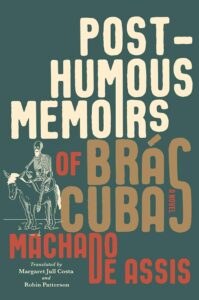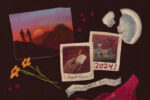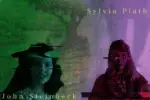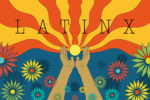Brazil, the largest nation in South America, boasts a vibrant tapestry of literature. From the early indigenous myths to the contemporary masterpieces of today, Brazilian literature reflects the country’s diverse culture, history, and societal complexities.
Brazilian literature dates back to pre-colonial times, before the Portuguese people overran the land. Indigenous people of Brazil did not have written literature; instead, they recounted stories and histories through oral literature that are now recognized as myths and folklore.
When the territory was first colonized, Portuguese colonizers and priests produced the first two types of written literature, only half of which was consumed by the native Brazilians. The first type was literature of information in which writers would send news from the colony to Portugal. The second type was used to forcibly convert indigenous people to Christianity.
Brazilian literature evolved to poems and sonnets written by the first actual Brazilian-born writer, Gregório de Matos Guerra. He used to write social criticisms and political sátiras. His work was mainly passed on in an oral form, making it difficult to find texts written by him.
Once Brazil gained its independence in 1822, its literature was portrayed in a way that matched most literature produced in Europe.
The nationalism and romanticism in Brazil was greatly marked by “O Guarani” by Jose de Alencar. The story is about a interracial white-indigenous couple in which the hero changes everything about him to be accepted by the family of his lover.
Later, social issues started growing as new classes, new cities and new life was created in Brazil. Realism and naturalism works still followed some of the European linguistic formatting, but the themes were more focused towards social pathologies.
The most famous literary period in Brazil happened in 1922 during the Week of Modern Art in which modernist literature was introduced to Brazilians. This genre was made by Brazilians for their own people. Brazilians would portray cultures they have seen and take inspiration from Europeans to create a whole new genre and their own mark in Brazilian history.
Here are my recommendations of Brazilian classics that should be on your TBR lists:
“Memórias Póstumas de Brás Cubas” (“The Posthumous Memoirs of Bras Cubas”)” by Machado de Assis
This one is my favorite Brazilian piece ever. Who knew you could fall in love with your school literature?
This masterpiece is a satirical novel narrated by its deceased protagonist, Bras Cubas. The narrative style is greatly marked by its unconventional and humorous tone. Through witty and ironic commentary on Bras Cubas’ wealthy and eccentric life, the book provides a sharp critique of 19th-century Brazilian society, touching on themes of mortality, love, and social hypocrisy.
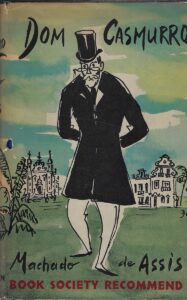 “Dom Casmurro” by Machado de Assis
“Dom Casmurro” by Machado de Assis
As you may notice, I have a little bias towards de Assis’ work, but his huge impact on the country’s literature makes me so fascinated by his work.
This is a story of jealousy, betrayal, and unreliable narration. The story revolves around Bento Santiago, who suspects his wife, Capitu, of infidelity. As the narrative unfolds, readers are led to question the reliability of the protagonist’s perspective, creating a compelling exploration of human psychology and trust.
Since it’s release in 1899 until today, there is still a big division in readers on whether Capitu cheated on Bento or not.
To bring this into our modern perspective, Bento and Capitu’s quarrel has the same impact of Ross and Rachel’s “break” in the TV show “Friends”!
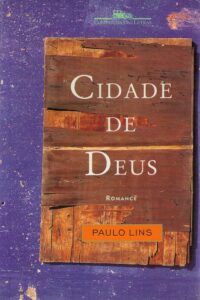 “Cidade de Deus” (“City of God”) by Paulo Lins
“Cidade de Deus” (“City of God”) by Paulo Lins
This book is better known from the movie adaptation made in 2002.
Based on real events, this novel takes readers into the heart of the infamous favelas (slums) of Rio de Janeiro. It portrays the harsh realities residents face, such as poverty, violence, and the lure of drug trafficking. Through a gripping narrative, Lins provides a raw and unfiltered portrayal of life in the urban sprawl, highlighting the complexities of Brazil’s social landscape.
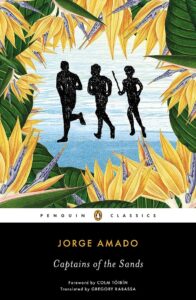 “Capitães da Areia” (“Captains of the Sands”) by Jorge Amado
“Capitães da Areia” (“Captains of the Sands”) by Jorge Amado
Captains of the Sands is another big-hit classic that marked my academic life during high school. The book gave me a perspective I did not have in other places and made me reflect on the great life I had in urban São Paulo.
This 1930s inspired novel is set in Salvador, Bahia and follows a group of street children known as the “Captains of the Sands”. Abandoned and marginalized, these young protagonists form a close-knit family as they navigate the challenges of poverty and survival. It portrays the resilience and camaraderie of these children even through such difficult times, shedding light on social issues and the strength of the human spirit.
 “O Auto da Compadecida” (“The Dog’s Will”) by Ariano Suassuna
“O Auto da Compadecida” (“The Dog’s Will”) by Ariano Suassuna
“O Auto da Compadecida” is a renowned play from 1955. Set in the arid hinterlands of Northeastern Brazil, the story revolves around two friends, João Grilo and Chicó. The plot takes a humorous and satirical look at their adventures as they navigate the complexities of rural life, facing challenges, and tricking people with their wit and charm, leading them to various amusing schemes and cons.
Central to the story is also Compadecida, a merciful and compassionate figure representing divine grace. Through a series of events, the characters encounter moral dilemmas, divine interventions, and moments of redemption, highlighting the interplay between human folly and divine justice.
The play is celebrated for its sharp social commentary, blending comedy with profound insights into human nature, morality, and spirituality.
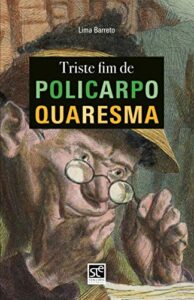 “O Triste Fim de Policarpo Quaresma” (“The Sad End of Policarpo Quaresma”) by Lima Barreto
“O Triste Fim de Policarpo Quaresma” (“The Sad End of Policarpo Quaresma”) by Lima Barreto
The story is centered on Policarpo Quaresma, an idealistic and patriotic clerk living in Rio de Janeiro during the early 20th century. He is passionate about Brazilian culture, history, and language. However, his idealism and dedication to his homeland often lead him into comical situations.
Policarpo’s strong belief in the power of Brazilian identity prompts him in various projects to promote the country’s culture and traditions, such as trying to revive the indigenous Tupi language, campaigns for the planting of native Brazilian trees, and even a proposal to change the national anthem. His unwavering idealism and naivety eventually lead to his downfall, resulting in a tragic and ironic end for the protagonist.
The novel highlights the hypocrisy and corruption within Brazilian society and bureaucracy. Through Policarpo Quaresma’s character, the author explores themes of nationalism, identity, and the clash between individual idealism and societal realities, creating a thought-provoking narrative.
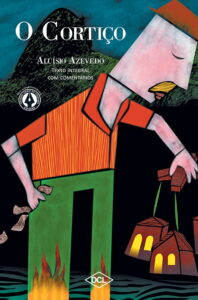 “O Cortiço” (“The Slum”) by Aluísio Azevedo
“O Cortiço” (“The Slum”) by Aluísio Azevedo
The narrative revolves around the lives of various residents living in the cortiço, offering a vivid portrayal of their daily struggles, dreams, vices, and relationships. João Romão, an ambitious Portuguese immigrant, becomes the landlord of the cortiço and exploits his tenants for financial gain. He is romantically involved with Bertoleza, a former slave, whom he exploits and mistreats. Some of the themes seen in the book are social mobility, poverty, desire, and the impact of the environment on human behavior. The characters represent different facets of society, reflecting the harsh realities of urban life and the struggle for survival.
“O Cortiço” is a powerful critique of the societal and economic forces that shape human lives, making it a significant work in Brazilian literature and a classic of naturalism.
 “O Sítio do Picapau Amarelo” (“Yellow Woodpecker Ranch”) by Monteiro Lobato
“O Sítio do Picapau Amarelo” (“Yellow Woodpecker Ranch”) by Monteiro Lobato
An important highlight of Brazilian literature is author Monteiro Lobato, who focused on children literature. He published the first book in his children series O Sítio do Picapau Amarelo in 1920, telling stories about the adventures of a group of children (a talking ragdoll included) living on a farm.
In these enchanting tales, the children meet other magical and fantastical characters, such as creatures from Brazilian folklore that are brought to life. In those adventures, they explore imaginary worlds, and learn valuable life lessons.
For younger Brazilians, this book series serves as a gateway to the rich world of Brazilian storytelling and a passion for reading.
I know it did for me.




